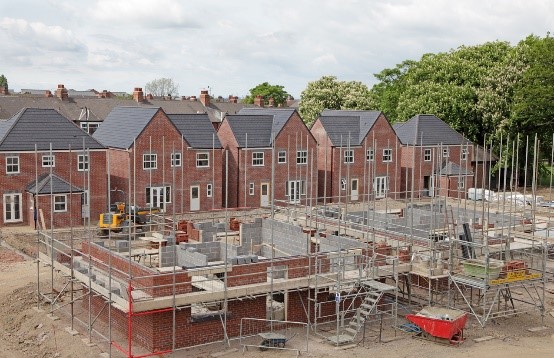Recent experience dictates that in the wake of an economic downturn and subsequent astringent regulations, the ground is fertile for the proliferation of new, agile contenders, who are primed to disrupt and innovate the market while cannibalising the weighty corpses of the incumbent players.
In some cases, the changing of the guard is absolute, as was the case with Netflix vs Blockbuster, or with Amazon now being the sole mighty oak standing in an almost completely deforested retail sector. In other cases, the insurgency of new players establishes a new more diverse ecosystem, with the likes of Airbnb coexisting with established hotels, or Uber challenging the rank and file taxi firms to provide a better service. Zorin Finance is proud to be an example of the latter, as we, in concert with an army of other alternative lenders have marched forward into previously bank-occupied territory to provide fast and flexible finance to the scores of SMEs who require it.
Yet the same cannot be said for these SME developers themselves. In the aftermath of the global financial crisis, it was the established building elite who survived and further entrenched their lofty positions, while the small and medium builders fell by the thousands. According to the National House Building Council the number of housebuilders delivering 30 or fewer homes more than halved from 5,156 in 2007 to 2,244 in 2016. Over the course of the last three decades there has been an 80% reduction in the number of SME builders (100 homes or less per year), falling from the peak of 12,000 in 1988. This decline has been met by a concomitant increase in the output of large builders. In 1960, the top 10 housebuilders accounted for only 9% of all new homes, today it is over 50%.

There are becoming fewer SME housebuilders
It is a curious situation that in an era of uprisings, where the establishment are increasingly challenged by outsiders on all fronts, it is the construction sector where one can find an almost nostalgic glimpse of the old order. The vast majority of the top housebuilders today were established over 40 years ago. Barratt Homes (founded 1958), Persimmon (1972), Bryant Homes (now Taylor Wimpey, 1885). A look at the top global companies in all sectors, however, features a healthy mix of young blood among the old guns, such as Amazon (1994), Facebook (founded 2004), Google (founded 1998).
- MPs call for end of large housebuilder dominance
- New home planning permissions grow, but are smaller sites being ignored?
- Which UK region is most underserved by property developers?
Why should the construction industry be so fossilised? In answering this, it is worth remembering that the large builders used to be young too once. It was back in the ‘60s and a new generation of optimistic entrepreneurs who did things differently began to lay their first bricks, slowly building the construction empires that still reign to this day. Things were different back then, the planning departments were easy, land was cheap and freely available and the market danced to the new social trends of consumerism and home ownership etc. As such, SMEs of that era were able to establish and expand their profitable businesses with ease. The pinnacle of SME involvement in the housebuilding industry was 1988 when over 12,000 SME builders were responsible for over 40% new-build homes, by 2015, however, just over 2,000 built only 12%.
The causes of the mass SME extinction are a complex interplay between discriminatory planning regulations and the retrenchment of affordable finance, and are best discussed in greater detail in another blog. Yet, it is interesting to ask why it even matters that SMEs have been displaced, given that the volume of housebuilding has increased in recent years. Some 42,470 new builds were registered by the National House Building Council in the first quarter of the year, the highest figure for a decade. Over three years, housebuilding has increased by more than 50%, driven predominantly by the large builders, who were responsible for 90% of housing increases since the recession. However, such growth cannot continue indefinitely. In order to deliver a sustained and robust supply of new homes, the building sector needs to be a balanced eco-system of both small and larger developers. SMEs are better placed to swiftly unlock the potential of smaller sites which are unsuitable for larger developers and would thus otherwise be left vacant. Furthermore, SMEs hold smaller cash balances and are thus motivated to turnover sites quickly and maintain output during times of economic hardship. SMEs are also vital in increasing investment and jobs which are sensitive to the needs of local communities. A major bottleneck which impedes the growth of the whole construction sector is the lack of skilled workers, and a diverse network of SMEs is much better placed than a few volume builders to provide apprenticeships and training across the nation.

Large housebuilders are producing the majority of UK homes
However, an often overlooked issue is that smaller players are vital for driving innovation and disruption. By-and-large homes are built in much the same fashion as they were 20 years ago, a process which is expensive, slow and inefficient. ONS statistics reveal that while productivity in other industries has increased by 50% in the last 20 years ago, the output per hour of the construction industry has remained flat. According to the Federation of Master Builders, the large housebuilders hold over 600,000 plots of land, enough to provide one million new homes in the UK, in other words they are fat and happy. Furthermore, even if they were motivated to innovate, the cost and time required to do so would be prohibitive, as large businesses, just as oil tankers, cannot turn on a penny.
Over the last two decades, it has been the nimble, hungry start-ups who provide the ideas and talent which have driven the growth and evolution of whole sectors. First it was technology, then retail, then travel, and now it is even the financial sector. The construction industry’s time is long overdue.
We should not be looking to simply resurrect the SMEs of yesteryear, but also encourage the micro-builders of tomorrow. Google has earmarked $300m to fund the ‘most disruptive’ start-ups, not out of altruism, but because it knows it can learn from them. If the large builders are switched on, they will be supporting SMEs to grow, not observing their decline.



Leave a comment